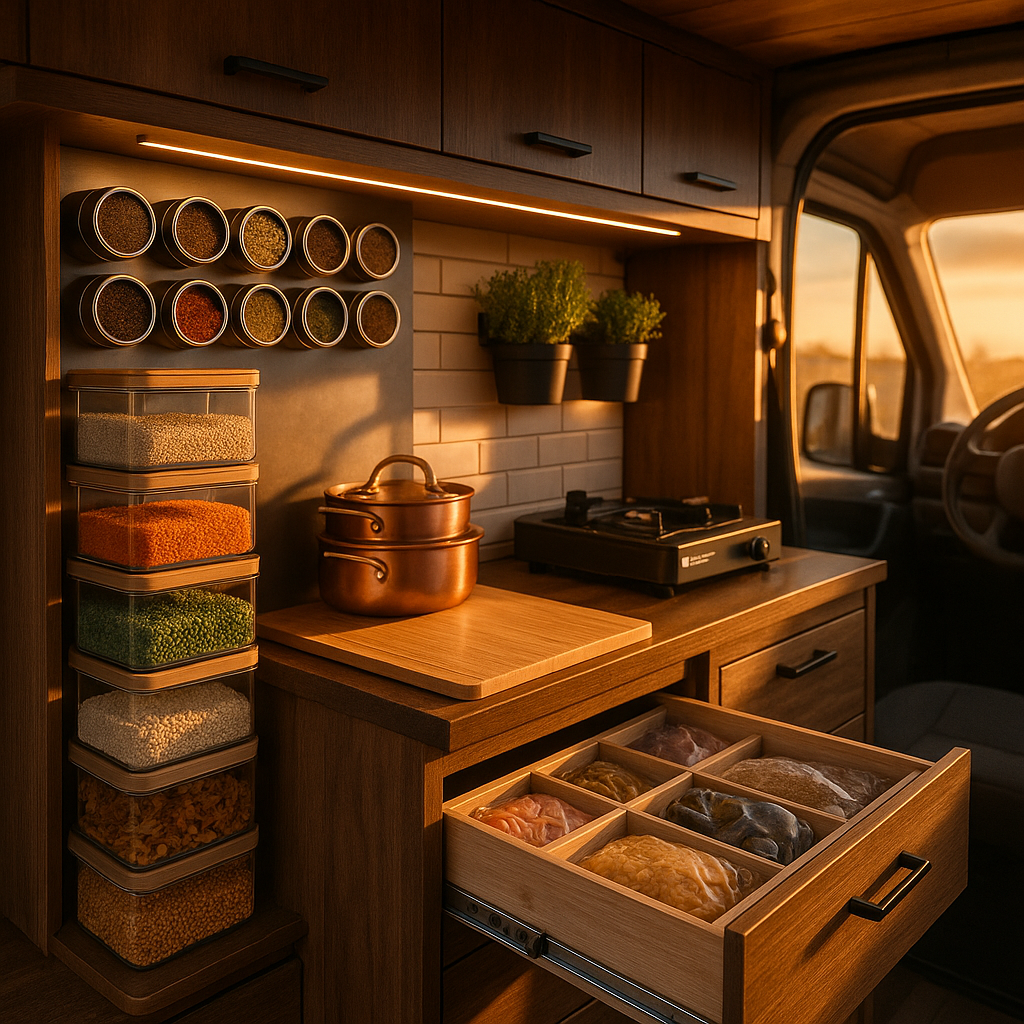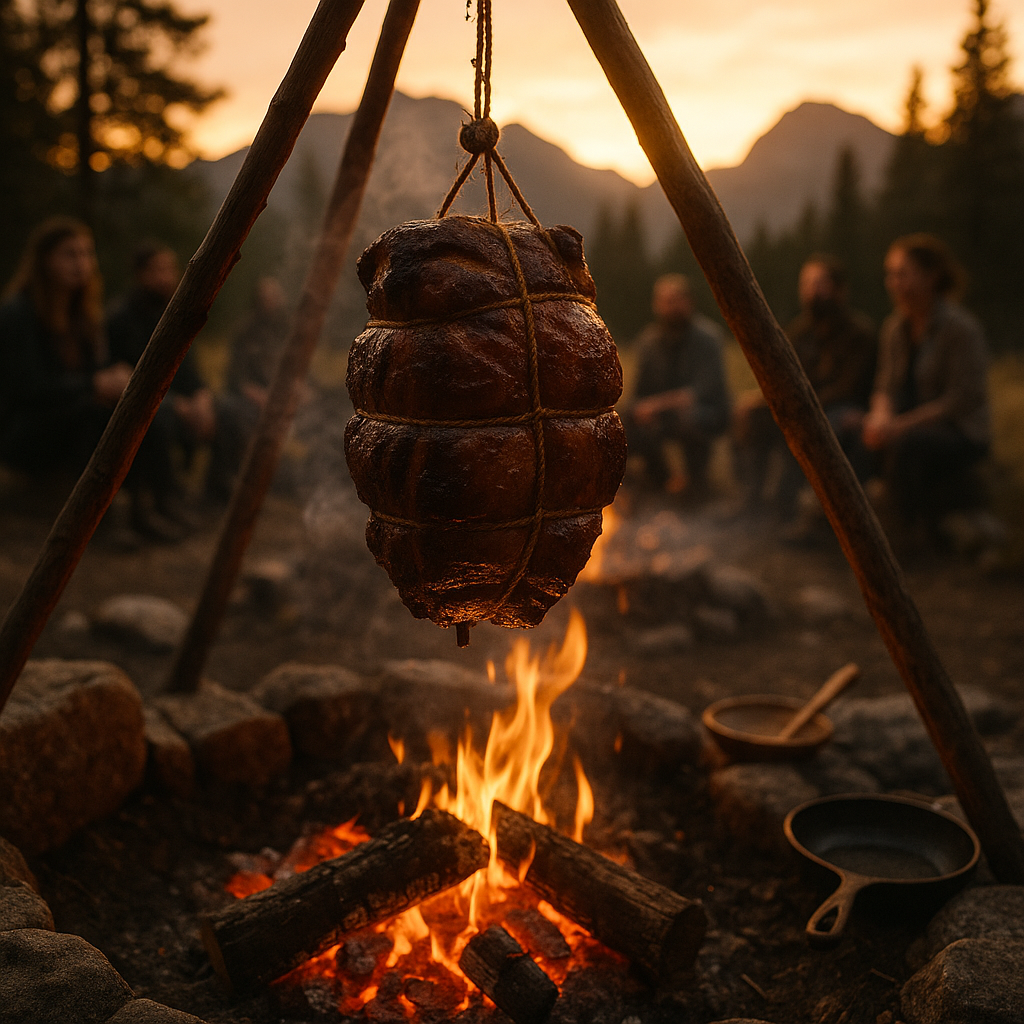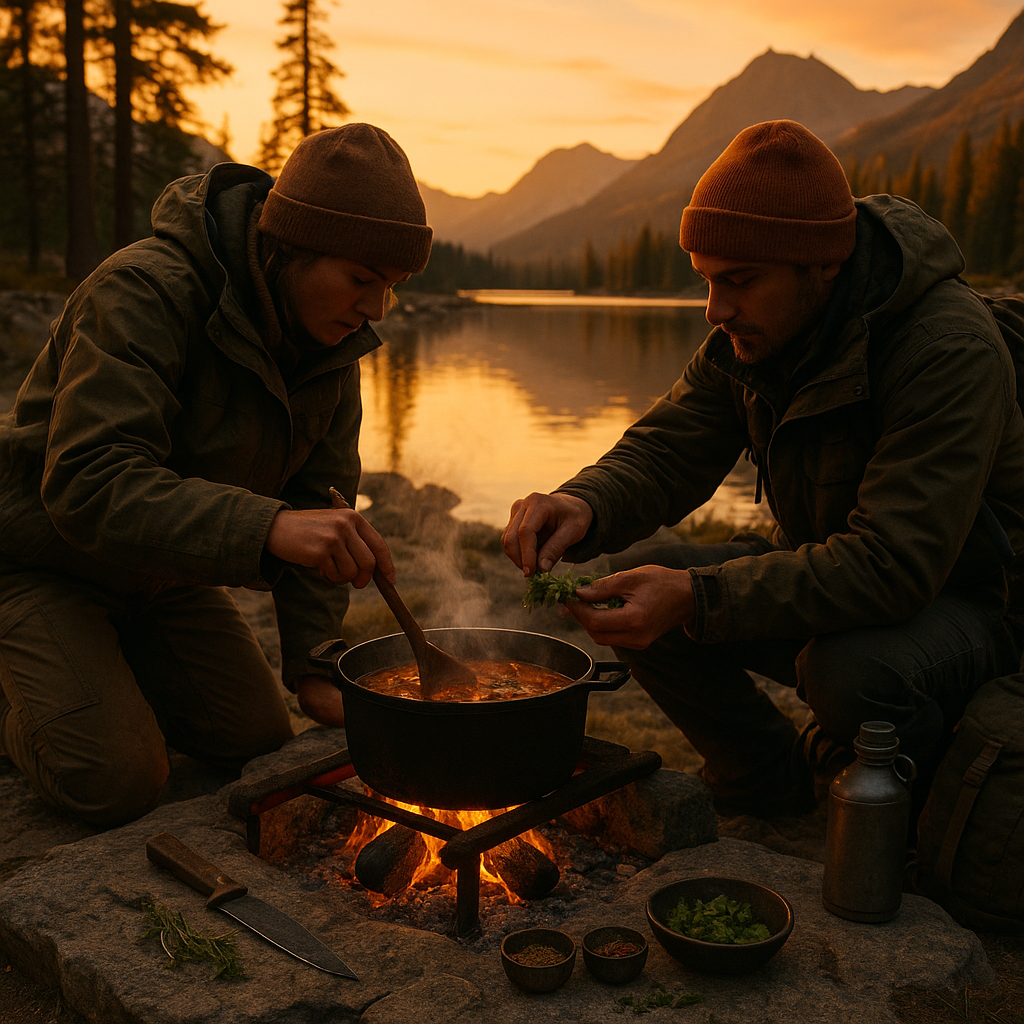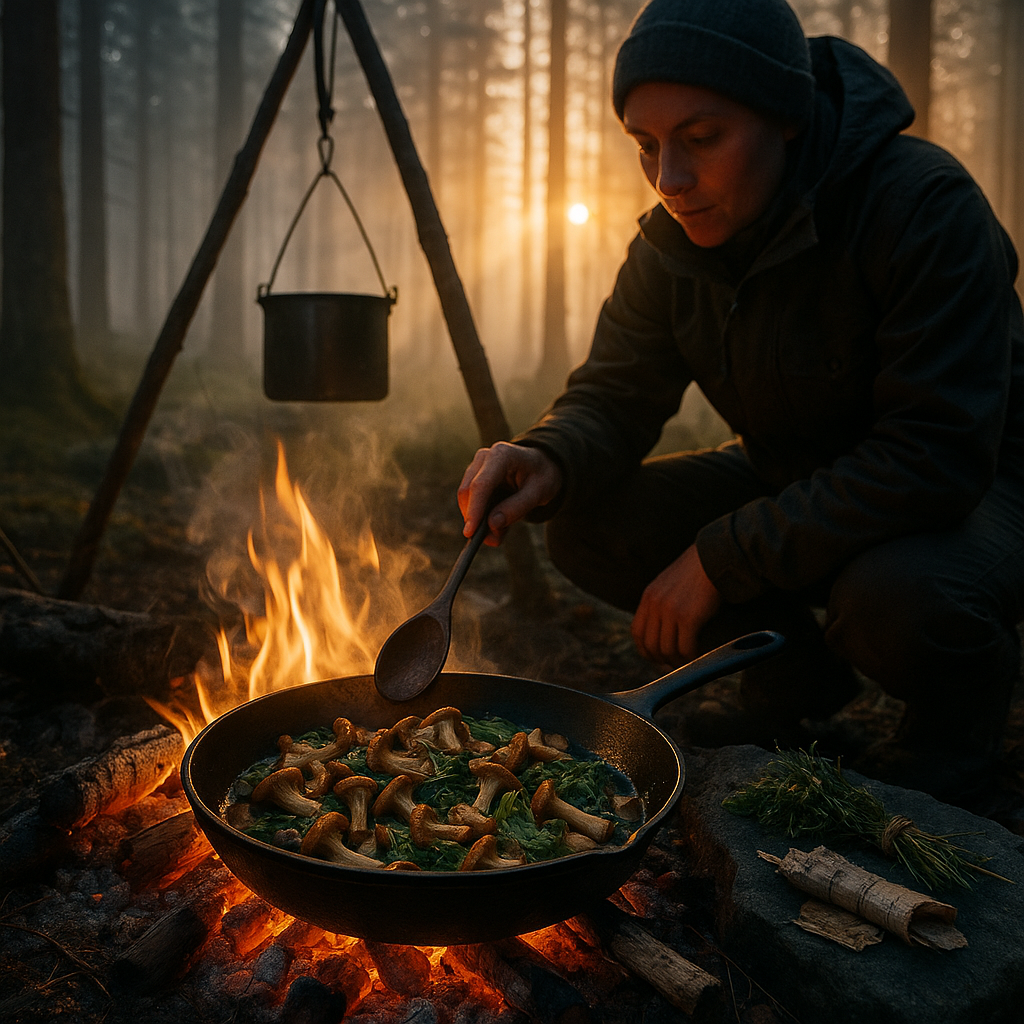Key Takeaways
- Pack non-perishables with versatility in mind. Focus on essential staples such as grains, canned proteins, dried spices, and shelf-stable sauces that can be combined in multiple ways to create diverse meals across a range of cuisines.
- Optimize space with stackable and modular storage. Invest in airtight, stackable containers or modular pantry systems to maximize efficiency while keeping supplies organized and protected from the elements.
- Prioritize lightweight yet durable cooking tools. Compact, multi-functional items like foldable utensils, nesting pots, and portable stoves make meal preparation manageable without compromising valuable space.
- Incorporate portable fresh-food solutions. Use vacuum-sealed bags or compact chillers for select fresh ingredients, extending their shelf life while maintaining vibrant flavors on the go.
- Create a mobile kitchen vibe with pull-out systems. Innovative modular setups for vans and nomadic living now include fold-out cutting boards, compact spice racks, and even small sinks, elevating the art of cooking on the move.
- Stock healthy, energy-boosting snacks for quick access. Keep nutrient-packed options like nuts, dried fruits, granola bars, or jerky easily accessible for days when full meal prep is not practical.
- Label and categorize for easy navigation. Organize pantry items by meal type, label containers clearly, and rotate older goods to the front to streamline cooking and minimize waste.
- Plan meals around shelf-stable combinations. Maintain a running list of recipes based on your stocked ingredients, such as one-pot meals or simple wraps requiring minimal preparation.
By thoughtfully curating your pantry, you unlock the freedom to enjoy nourishing, flavorful meals no matter where the road takes you. The following sections explore the tools, techniques, and recipes that transform mobile kitchens into places of genuine culinary adventure.
Introduction
A great meal in the wilderness is rarely a matter of chance. Instead, it begins with a nomad pantry that is both clever and creative. In a life where every square inch and ounce matters, the art of the mobile kitchen lies in selecting ingredients that do double duty, storage solutions that make sense, and tools sturdy enough to keep up with your pace.
Mastering these mobile pantry essentials means you can craft vibrant, satisfying dishes whether you are chasing sunrise from your van or winding along remote mountain trails. Discover how to organize, stock, and streamline your travel pantry so that every meal becomes an occasion, each bite layered with the spirit of adventure.
Building Your Nomad Pantry
Foundation Ingredients
At the heart of every well-stocked nomad pantry are ingredients chosen for flavor, durability, and versatility. Select items that withstand fluctuating temperatures and can be used in countless combinations. Whole grains like quinoa, bulgur, and quick-cooking rice offer lasting energy with minimal preparation, fitting easily into limited storage nooks.
Stay Sharp. Stay Ahead.
Join our Telegram Channel for exclusive content, real insights,
engage with us and other members and get access to
insider updates, early news and top insights.
 Join the Channel
Join the Channel
Transform your pantry into a culinary toolkit by including shelf-stable essentials such as miso paste, sun-dried tomatoes, dried mushrooms, and tomato paste in tubes. These concentrated flavor bombs can elevate even the simplest meal, turning campfire fare into something memorable. Mediterranean icons like olive oil, preserved lemons, and capers bring brightness and complexity to your repertoire, proving their value no matter the weather or location.
For protein, consider canned beans, tuna, and salmon, along with tofu or tempeh in shelf-safe packaging. These staples deliver nutrition and variety, whether you are improvising a stew at a remote trailhead or assembling a cold salad after a sun-drenched hike.
Strategic Spice Selection
A thoughtfully curated spice collection packs a world of flavor into a tiny footprint. Opt for versatile blends that span multiple cuisines, opening up global possibilities wherever you roam.
Consider these essential blends:
- Za’atar to infuse Middle Eastern notes into roasted vegetables and flatbreads
- Curry powder for easy, aromatic one-pot meals
- Italian herb mix to brighten pasta, rice bowls, or soups
- Chinese five-spice as a sweet-savory accent for stir-fries or grilled meats
Pack these in magnetic tins along a metal backsplash or in compact containers inside a dedicated spice box. With your flavors close at hand, you can improvise under starlit skies, letting your senses guide each dish.
Space-Efficient Storage Solutions
Modular Systems
Transform even the smallest van or backpack into a culinary command center with modular storage. Pull-out drawers featuring adjustable dividers let you organize by frequency of use and type of item. Set up easy-access zones for daily essentials, backup supplies for extended stretches, and insulated sections for perishables.
A color-coded or labeled system simplifies navigation, making forgotten ingredients a thing of the past. As your journey evolves, reconfigure drawers and containers to suit your latest itinerary, ensuring your mobile kitchen remains as flexible as your plans.
Innovations in Nomadic Food Storage
Today’s nomads benefit from ingenious advances in storage design across multiple industries. Collapsible silicone containers shrink as you consume food, saving space and keeping your pantry organized. Vacuum-sealed bags preserve freshness and protect against the jostling of rough roads, making them ideal for pre-prepped ingredients or delicate items.
Emerging tech has made its way into mobile pantries. Solar-powered moisture control systems, borrowed from cutting-edge environmental science, help safeguard sensitive dry goods during stretches of unpredictable weather. App-connected inventory systems, inspired by retail and e-commerce logistics, now help track consumption patterns and flag restocking needs, preventing both shortages and waste.
Creative Cooking Strategies
Meal Planning for Freedom
True culinary freedom on the road comes from creating meals with cross-functional ingredients. Rather than planning individual menus, design meals that share core components. A batch of roasted vegetables can fill a wrap for lunch, become soup for dinner, and serve as the heart of a warm salad the next day.
Take chickpeas as an example. These can become:
- A fragrant Moroccan curry with a handful of dried apricots and warming spices
- A quick, protein-rich hummus for midday snacks
- Crispy trail mix roasted with za’atar and olive oil
- A fresh Mediterranean salad tossed with preserved lemon and local greens
This mindset is mirrored in other fields, such as healthcare, where systems integrate shared resources for efficiency, or education, where curriculum components are repurposed across modules. When your meals overlap in this way, you eliminate waste, lighten your load, and keep every dish interesting.
Adapting to Available Resources
Every landscape influences what is possible in your kitchen. Adaptability is essential. If you lack fresh herbs, use dried blends or preserved alternatives that deliver similar profiles. When you run out of one staple, swap in a close cousin; you might discover a new favorite in a moment of improvisation.
Develop a selection of “anywhere meals.” These staples rely on a base of staple grains or legumes, integrate whatever add-ins are on hand, and work with any heat source, even a campfire or portable stove. This echoes practices in finance, where portfolio managers diversify holdings, or in marketing, where campaigns flex by reallocating channel resources.
Expert Tips and Maintenance
Climate Considerations
Weather and location matter more than you might think. Humid coasts require vigilant moisture protection; airtight containers with desiccant packs keep grains and flours dry. For arid desert treks, deploy passive cooling systems (such as dark, insulated bags placed in shaded van compartments) and choose ingredients less prone to spoiling in heat.
Regularly rotate ingredients, especially if you travel across regions with varying market offerings. This ensures your pantry remains fresh, adaptable, and ready for new landscapes.
Stay Sharp. Stay Ahead.
Join our Telegram Channel for exclusive content, real insights,
engage with us and other members and get access to
insider updates, early news and top insights.
 Join the Channel
Join the Channel
Troubleshooting Common Challenges
Even the best pantry needs maintenance. Use shock-absorbing liners in drawers to buffer jars against bumpy roads. Place silica gel packets in containers with flour and snacks to ward off unexpected humidity. Keep a compact backup spice kit and a stash of emergency meals, like freeze-dried chili, nut butter, or hearty energy bars, within easy reach for the inevitable surprise detours.
Schedule inventory checks every few months. This habit, common to logistics and even environmental resource management, prevents food waste, catches leaks or spoilage early, and guarantees that every bite is as good as you envisioned.
Expanding Mobile Cooking Horizons
Although the foundation of a solid nomad pantry is built on practical preparation, its possibilities extend far beyond necessity. With your system in place, you gain the freedom to craft meals inspired by the flavors of the regions you traverse. On summer evenings in coastal landscapes, fresh-caught fish paired with preserved lemon and local greens becomes a feast under the fading sun. In snowy forests, a hearty stew seas





Leave a Reply